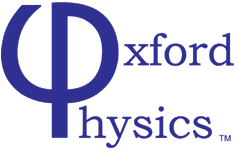Oxford Experimental Radio/mm Cosmology
Employment and PhD Opportunities
Jobs
We currently have no specific job advertisements, however we
welcome informal enquiries from people who are interested in
e.g. applying for fellowships to take up within our group. Please
contact either Mike
Jones or Ghassan Yassin
PhD Projects
If you are interessted in doing a PhD with
us then please contact either Mike
Jones, Ghassan Yassin or Angela Taylor for more information.
C-BASS: the C-Band All-Sky Survey:
Prof Michael Jones and Dr Angela Taylor
One of the biggest challenges facing future measurements of the cosmic
microwave background radiation, and particularly its polarization, is
the understanding and removal of foreground emission, which is
dominated by synchrotron and dust emission in our Galaxy. This is
likely to be the limiting factor in future experiments attempting to
measure the B-mode polarization signal in the CMB in order to
understand the physics of inflation. To improve our knowledge of the
synchrotron component of the Galactic emission, we are making a survey
of the entire sky at 5 GHz (C-band) in both intensity and polarization
which will be by far the most sensitive survey at these
wavelengths. The receiver for this survey has been build in Oxford and
it will be deployed on telescopes in California and South Africa. By
October 2009 the first (northern) survey will be starting, and during
2010 the receiver will be moved to South Africa for the southern
survey. This is now an ideal time for a student to join the project in
order to undertake the observations and data analysis. The student
will take a leading role in analysing data, writing software tools to
process and calibrate the data, assess systematic errors, and make
modifications to the observing strategy as necessary. They will work
closely with our collaborators at Caltech, Manchester and in South
Africa and will spend some time at both observing sites, and will be
involved in producing and publishing the final survey data products
and scientific interpretation.
Future Sunyaev-Zel'dovich experiments
Dr Angela Taylor and Prof. Michael Jones
The Sunyaev-Zel'dovich effect is a unique way of looking at clusters
of galaxies, the largest building-blocks of the universe. Instead of
detection radiation emitted by the clusters, we see the cluster gas in
silhouette against the cosmic microwave background, as the hot gas in
the cluster scatters the radiation passing through it. The SZ effect
has the unique property that its surface brightness is independent of
redshift, making it an important tool for both cosmology and
astrophysics. Several experiments around the world are currently
making surveys of clusters using the SZ effect. The distinct spectral
distortion carries important information about the cluster physics,
but to fully exploit this we need to make sensitive measurements over
a very wide range of frequencies, from around 30 GHz to over 250 GHz.
We are currently planning, with colleagues in the UK and the USA, a
new experiment which will make detailed images of the SZ effect over
this full range of frequencies. This will require a range of new or
substantially improved technologies, including wide-band RF
components, correlators, antennas and receivers, as well as careful
design of the experiment and new data analysis techniques. We have
data in hand from our current SZ experiment, the Cosmic Background
Imager, and are expecting to have data soon from our new prototype 220
GHz SZ interferometer, GUBBINS. We are looking for a student who can
contribute to either or both of the hardware development, and the
simulation and analysis software.
Scientific analysis of the Clover experiment
Prof. Pedro Ferreira and Prof. Michael Jones
One of the most important experimental goals in cosmology is to
measure the B-mode polarization of the cosmic microwave background,
which encodes information about the physics of the epoch of
inflation. The Clover experiment is designed to measure the B-mode of
the cosmic microwave background, and is expected to be deployed to its
observing site in the Atacama desert in Chile towards the end of
2009. We would like a student to become closely involved in the
initial observing and data analysis programme. Depending on the
inclinations of the student, the work could concentrate on pure data
analysis techniques, or commissioning, operations and observing
techniques, or a combination of the two. We wish to develop some of
the scientific analysis tools for the first year of data, in
particular for parameter estimation, non-gaussian analysis and cross
correlation with foreground templates. We also need to develop tools
for calibration, data quality monitoring, searching for an eliminating
systematic effects such as ground pick-up and other scan-synchronous
signals, and analysing and refining the observing strategy of the
instrument.
Building the Square Kilometre Array
Prof. Michael Jones
Radio astronomers around the world are currently designing the Square
Kilometre Array (SKA), which will be by far the biggest radio
telescope ever built, and which will transform many areas in
astrophysics and cosmology. This globalproject will soon be based in
the UK, and Oxford is playing a leading role in the design and
development of the SKA. The student will have the opportunity to work
on the prototype systems that are being built in the UK over the next
few years, and there is a strong possibility of getting involved with
one of the international pathfinder projects such as MeerKAT in South
Africa. Depending on the interests and aptitudes of the student, they
might work on hardware design, software development, integration and
testing of prototypes and demonstrators, or some combination of these.
|

